What Is Skin Cancer? Skin cancer involves the uncontrolled proliferation of abnormal cells within the epidermis, the outermost layer of skin. This condition arises from unrepaired DNA damage, leading to mutations that cause skin cells to multiply rapidly and form malignant tumors. At WHAT.EDU.VN, we provide comprehensive information to help you understand and address this prevalent health concern. Early detection and treatment are crucial. Explore skin growths, UV exposure, and treatment options to safeguard your skin health.
1. Understanding The Basics of Skin Cancer
1.1. Defining Skin Cancer: An Overview
Skin cancer occurs when skin cells undergo mutations, leading to uncontrolled growth. This typically happens in the epidermis due to DNA damage, often caused by ultraviolet (UV) radiation from the sun or tanning beds. The primary types include basal cell carcinoma (BCC), squamous cell carcinoma (SCC), melanoma, and Merkel cell carcinoma (MCC).
1.2. The Epidermis and Its Role
The epidermis, the outermost layer of your skin, protects your body from the environment. It contains several types of cells, including:
- Basal Cells: Located at the base of the epidermis, these cells divide and replace the squamous cells.
- Squamous Cells: These flat cells form the majority of the epidermis and protect the body from external elements.
- Melanocytes: These cells produce melanin, the pigment that gives skin its color and protects it from UV radiation.
When these cells are damaged, they can become cancerous.
1.3. Common Types of Skin Cancer
Understanding the different types of skin cancer is essential for early detection and treatment. Here’s a brief overview:
- Basal Cell Carcinoma (BCC): The most common type, usually appearing as a pearly or waxy bump.
- Squamous Cell Carcinoma (SCC): The second most common, often presenting as a scaly, red patch or nodule.
- Melanoma: The most dangerous form, developing from melanocytes and potentially spreading to other parts of the body.
- Merkel Cell Carcinoma (MCC): A rare and aggressive type that often appears as a firm, painless nodule.
1.4. The Role of DNA Damage and Mutations
DNA damage is a primary cause of skin cancer. When skin cells are exposed to UV radiation, their DNA can become damaged. This damage can lead to mutations that cause the cells to grow uncontrollably. If the body’s natural repair mechanisms fail, these mutated cells can develop into cancerous tumors.
2. Identifying Skin Cancer: What to Look For
2.1. Varied Appearances of Skin Cancer
Skin cancer can manifest in various ways, making early detection challenging. The appearance can differ significantly based on factors like skin tone, the specific type of cancer, and the location on the body. Regular self-exams and professional screenings are crucial for identifying suspicious changes.
2.2. Basal Cell Carcinoma (BCC) Symptoms
BCC typically presents as:
- A pearly or waxy bump
- A flat, flesh-colored or brown scar-like lesion
- A bleeding or scabbing sore that heals and returns
- A sore that doesn’t heal
2.3. Squamous Cell Carcinoma (SCC) Symptoms
SCC often appears as:
- A firm, red nodule
- A scaly, crusty patch
- A sore that doesn’t heal
2.4. Melanoma Symptoms: ABCDEs of Detection
Melanoma can be identified using the ABCDE method:
- Asymmetry: One half of the mole doesn’t match the other half.
- Border: The edges are irregular, blurred, or notched.
- Color: The color is uneven and may include shades of black, brown, and tan.
- Diameter: The mole is usually larger than 6 millimeters (about 1/4 inch) in diameter.
- Evolving: The mole is changing in size, shape, or color.
2.5. Recognizing Merkel Cell Carcinoma (MCC)
MCC typically appears as:
- A rapidly growing, painless nodule
- A firm, dome-shaped growth
- A lesion that is often red, pink, or purple
2.6. The Importance of Regular Skin Exams
Regular self-exams and professional screenings are essential for detecting skin cancer early. Early detection significantly improves treatment outcomes. Make it a habit to check your skin regularly and consult a dermatologist if you notice any suspicious changes.
3. Causes and Risk Factors of Skin Cancer
3.1. The Primary Culprit: UV Radiation
The primary cause of skin cancer is exposure to ultraviolet (UV) radiation. This can come from the sun or artificial sources like tanning beds. UV radiation damages the DNA in skin cells, leading to mutations that can cause cancer.
3.2. Understanding UV Rays: UVA and UVB
There are two main types of UV rays that can harm your skin:
- UVA Rays: These rays penetrate deep into the skin and can cause premature aging and wrinkles.
- UVB Rays: These rays are responsible for sunburn and play a key role in the development of skin cancer.
Both types of UV rays can damage DNA and increase the risk of skin cancer.
3.3. Tanning Beds: A Significant Risk Factor
Using tanning beds significantly increases the risk of skin cancer, especially melanoma. Tanning beds emit high levels of UV radiation, which can cause severe damage to the skin. Avoid tanning beds to protect your skin health.
3.4. Genetic Predisposition
Genetics can play a role in the development of skin cancer. If you have a family history of skin cancer, you may be at a higher risk. Genetic mutations can make some people more susceptible to DNA damage from UV radiation.
3.5. Weakened Immune System
A weakened immune system can increase the risk of skin cancer. People with compromised immune systems, such as those who have had organ transplants or have HIV/AIDS, are more likely to develop skin cancer.
3.6. Other Risk Factors
Other factors that can increase the risk of skin cancer include:
- Fair Skin: People with fair skin have less melanin, making them more susceptible to UV damage.
- Moles: Having many moles or unusual moles (dysplastic nevi) can increase the risk of melanoma.
- Age: The risk of skin cancer increases with age due to cumulative UV exposure.
- Previous Skin Cancer: If you have had skin cancer before, you are at a higher risk of developing it again.
4. Prevention Strategies for Skin Cancer
4.1. Sun Protection: Your First Line of Defense
Protecting your skin from the sun is the most effective way to prevent skin cancer. This includes using sunscreen, wearing protective clothing, and seeking shade during peak sun hours.
4.2. Choosing the Right Sunscreen
When selecting a sunscreen, look for:
- Broad-Spectrum Protection: Protects against both UVA and UVB rays.
- SPF 30 or Higher: Provides adequate protection from UV radiation.
- Water Resistance: Remains effective even when sweating or swimming.
Apply sunscreen generously and reapply every two hours, or more often if swimming or sweating.
4.3. Protective Clothing and Gear
Wearing protective clothing can help shield your skin from the sun. Consider:
- Long Sleeves and Pants: Cover as much skin as possible.
- Wide-Brimmed Hats: Protect your face, ears, and neck.
- Sunglasses: Shield your eyes and the skin around them from UV radiation.
4.4. Seeking Shade During Peak Sun Hours
The sun’s rays are strongest between 10 a.m. and 4 p.m. Seek shade during these hours to reduce your exposure to UV radiation.
4.5. Avoiding Tanning Beds
Tanning beds emit harmful UV radiation and significantly increase the risk of skin cancer. Avoid tanning beds to protect your skin health.
4.6. Regular Skin Self-Exams
Regularly examine your skin for any new or changing moles or lesions. Use the ABCDE method to identify suspicious moles and consult a dermatologist if you notice any changes.
5. Diagnosing Skin Cancer: What to Expect
5.1. The Initial Skin Exam
The first step in diagnosing skin cancer is a visual examination by a dermatologist. The doctor will look for any suspicious moles, lesions, or other skin abnormalities.
5.2. Biopsy Procedures: Confirming the Diagnosis
If the dermatologist finds a suspicious area, they will perform a biopsy. A biopsy involves removing a small sample of skin for examination under a microscope. There are several types of biopsies:
- Shave Biopsy: The doctor uses a blade to shave off the top layer of skin.
- Punch Biopsy: The doctor uses a circular tool to remove a small, round sample of skin.
- Excisional Biopsy: The doctor removes the entire growth, along with a small margin of surrounding skin.
5.3. Pathological Examination of Biopsy Samples
The skin sample is sent to a pathologist, who examines it under a microscope to determine if cancer cells are present. If cancer is found, the pathologist will determine the type and stage of the cancer.
5.4. Staging of Skin Cancer
Staging is the process of determining how far the cancer has spread. The stage of the cancer helps doctors determine the best course of treatment. The stages of skin cancer range from stage 0 (carcinoma in situ) to stage IV (metastatic cancer).
5.5. Additional Tests and Imaging
In some cases, additional tests may be needed to determine if the cancer has spread to other parts of the body. These tests may include:
- Lymph Node Biopsy: Removing a lymph node to check for cancer cells.
- Imaging Tests: Such as X-rays, CT scans, or MRI scans, to look for tumors in other organs.
6. Treatment Options for Skin Cancer
6.1. Surgical Excision: Removing the Cancer
Surgical excision is a common treatment for skin cancer. The surgeon removes the tumor along with a margin of healthy skin. This is often effective for early-stage BCCs and SCCs.
6.2. Mohs Surgery: Precision Removal
Mohs surgery is a specialized technique used to treat BCCs and SCCs. The surgeon removes the tumor layer by layer, examining each layer under a microscope until no cancer cells remain. This technique preserves healthy tissue and minimizes scarring.
6.3. Cryotherapy: Freezing Cancer Cells
Cryotherapy involves freezing the cancer cells with liquid nitrogen. This is often used for small, superficial BCCs and SCCs.
6.4. Radiation Therapy: Targeting Cancer with Energy
Radiation therapy uses high-energy rays to kill cancer cells. This may be used for BCCs, SCCs, and MCCs, especially when surgery is not an option.
6.5. Topical Medications: Creams and Lotions
Topical medications, such as creams and lotions, can be used to treat superficial skin cancers. These medications contain ingredients that kill cancer cells or stimulate the immune system to attack the cancer.
6.6. Immunotherapy: Boosting the Immune System
Immunotherapy drugs help the immune system recognize and attack cancer cells. This treatment is often used for advanced melanoma and MCC.
6.7. Targeted Therapy: Precision Medicine
Targeted therapy drugs target specific molecules that cancer cells need to grow and survive. This treatment is often used for advanced melanoma.
6.8. Chemotherapy: Systemic Treatment
Chemotherapy uses drugs to kill cancer cells throughout the body. This treatment is typically used for advanced skin cancers that have spread to other organs.
7. Living with Skin Cancer: Support and Resources
7.1. Emotional and Psychological Support
Being diagnosed with skin cancer can be emotionally challenging. It’s important to seek support from friends, family, or a therapist. Support groups can also provide a sense of community and understanding.
7.2. Managing Treatment Side Effects
Skin cancer treatments can cause side effects such as fatigue, nausea, and skin irritation. Talk to your doctor about ways to manage these side effects.
7.3. Follow-Up Care and Monitoring
After treatment, it’s important to have regular follow-up appointments with your dermatologist. These appointments will help monitor for any signs of recurrence and detect any new skin cancers early.
7.4. Lifestyle Adjustments
Making healthy lifestyle adjustments can help reduce the risk of recurrence and improve overall health. These adjustments may include:
- Protecting your skin from the sun
- Eating a healthy diet
- Exercising regularly
- Avoiding smoking
7.5. Connecting with Support Groups
Support groups can provide a valuable source of information and emotional support. Connecting with others who have experienced skin cancer can help you feel less alone and more empowered.
8. Frequently Asked Questions (FAQs) About Skin Cancer
8.1. General Questions
| Question | Answer |
|---|---|
| What is the most common type of skin cancer? | Basal cell carcinoma (BCC) is the most common type, accounting for about 80% of all skin cancer cases. |
| Is skin cancer hereditary? | While not directly hereditary, having a family history of skin cancer can increase your risk. |
| Can skin cancer spread to other parts of the body? | Yes, melanoma and squamous cell carcinoma (SCC) can spread if not treated early. Basal cell carcinoma (BCC) rarely spreads. |
| What age group is most affected by skin cancer? | The risk of skin cancer increases with age, but it can affect people of all ages, especially those with high UV exposure. |
| How often should I get my skin checked by a dermatologist? | It’s recommended to have a professional skin exam at least once a year, or more frequently if you have a higher risk. |
| Can skin cancer be cured? | Yes, most types of skin cancer are curable if detected and treated early. |
| Can I get skin cancer on parts of my body that are not exposed to the sun? | Yes, although less common, skin cancer can occur on areas not typically exposed to the sun. |
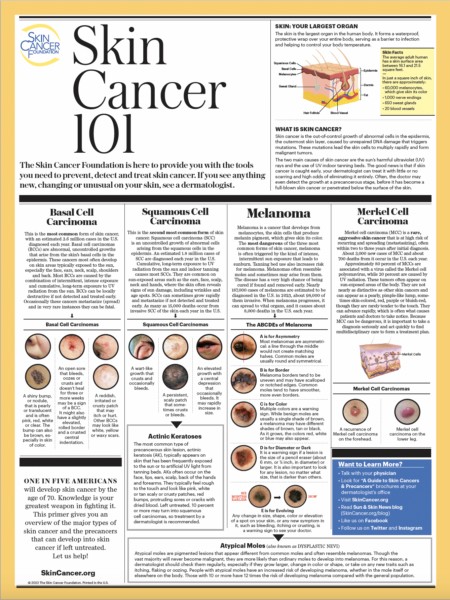

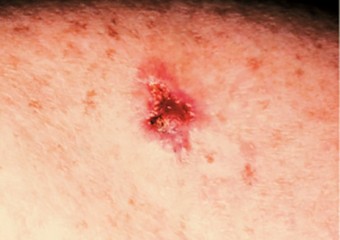
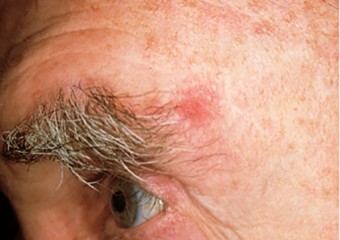
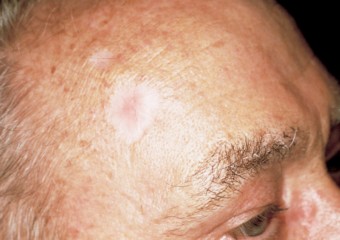
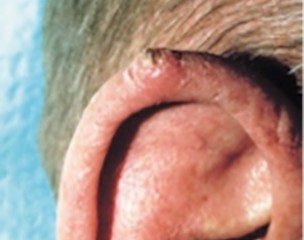
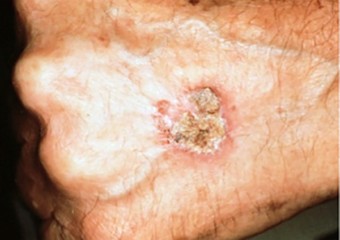

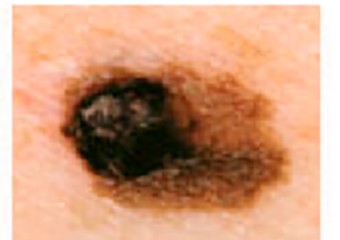
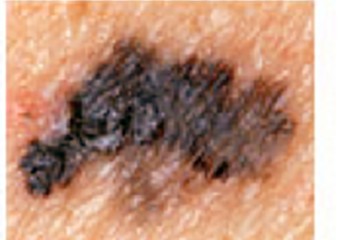
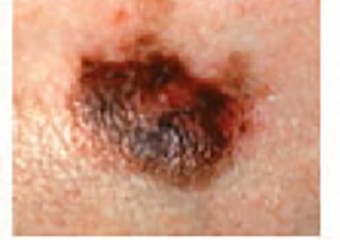
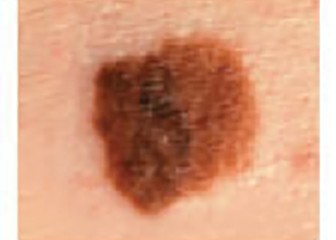

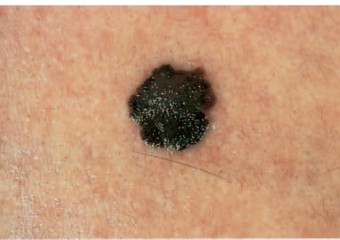
8.2. Prevention & Early Detection
| Question | Answer |
|---|---|
| What is the best way to protect myself from skin cancer? | Use sunscreen with SPF 30 or higher, wear protective clothing, seek shade during peak sun hours, and avoid tanning beds. |
| How do I perform a self-skin exam? | Check your skin regularly for any new or changing moles or lesions. Use a mirror to see hard-to-reach areas and follow the ABCDE guidelines for melanoma detection. |
| What should I do if I find a suspicious mole? | Consult a dermatologist as soon as possible for a professional evaluation and possible biopsy. |
8.3. Treatments & Aftercare
| Question | Answer |
|---|---|
| What are the common treatments for skin cancer? | Common treatments include surgical excision, Mohs surgery, cryotherapy, radiation therapy, topical medications, immunotherapy, targeted therapy, and chemotherapy. |
| What can I expect after skin cancer treatment? | Expect regular follow-up appointments, monitoring for recurrence, and managing any side effects from treatment. Continue to practice sun protection and maintain a healthy lifestyle. |
| Are there any natural remedies for skin cancer? | There is no scientific evidence to support the use of natural remedies as a standalone treatment for skin cancer. Always consult a medical professional for evidence-based treatments. |
9. Skin Cancer Information PDF
The Skin Cancer Foundation provides resources to help you prevent, detect, and treat skin cancer. Download the Skin Cancer Information PDF.
10. Raise Awareness
Thank you for your interest in raising awareness about skin cancer. You’ll receive an email with a link to download the Skin Cancer Information PDF.
11. The Risk
- 1 OUT OF 5: Americans will develop skin cancer by age 70.
12. Types of Skin Cancer
12.1. Basal Cell Carcinoma (BCC)
What is it? Basal cell carcinomas (BCCs) are abnormal, uncontrolled growths that arise from the skin’s basal cells in the outermost layer of skin (epidermis).
Where is it usually found? These cancers most often develop on skin areas typically exposed to the sun, especially the face, ears, neck, scalp, shoulders, and back.
What causes it? Most BCCs are caused by the combination of intermittent, intense exposure and cumulative, long-term exposure to UV radiation from the sun.
How many people get it? BCC is the most common form of skin cancer, with approximately 3.6 million cases diagnosed in the United States each year.
How serious is it? BCCs can be locally destructive if not detected and treated early. Occasionally these cancers metastasize (spread); and in very rare instances they can be fatal.
12.2. Squamous Cell Carcinoma (SCC)
What is it? Squamous cell carcinoma (SCC) is an uncontrolled growth of abnormal cells arising from the squamous cells in the outmost layer of skin (epidermis).
Where is it usually found? SCCs are common on sun-exposed areas such as the ears, face, scalp, neck, and hands. These are places where the skin often reveals signs of sun damage, including wrinkles and age spots.
What causes it? Cumulative, long-term exposure to UV radiation from the sun and tanning beds causes most SCCs.
How many people get it? SCC is the second most common form of skin cancer. An estimated 1.8 million cases are diagnosed each year in the U.S.
How serious is it? SCCs can sometimes grow rapidly and metastasize if not detected and treated early.
12.3. Melanoma
What is it? Melanoma is a cancer that develops from melanocytes, the skin cells that produce melanin pigment, which gives skin its color.
Where is it usually found? Melanomas often resemble moles and sometimes may arise from them. They can appear on any area of the body, even in areas that are not typically exposed to the sun.
What causes it? Melanoma is often triggered by the kind of intense, intermittent sun exposure that leads to sunburn. Tanning bed use also increases risk for melanoma.
How many people get it? In 2025, an estimated 212,200 new cases of melanoma are expected to occur in the U.S. Of those, 107,240 cases will be in situ (noninvasive), confined to the epidermis (the top layer of skin), and 104,960 cases will be invasive, penetrating the epidermis into the skin’s second layer (the dermis).
How serious is it? Melanoma is the most dangerous of the three most common forms of skin cancer. Melanomas can be curable when caught and treated early. In 2025, melanoma is projected to cause about 8,430 deaths.
12.4. Merkel Cell Carcinoma (MCC)
What is it? Merkel cell carcinoma (MCC) is a rare, aggressive skin cancer.
Where is it usually found? These tumors usually appear as firm, painless lesions or nodules on a sun-exposed area (about half of the time on the head and neck, and frequently on the eyelids).
What causes it? Usually associated with a virus called the Merkel cell polyomavirus, MCCs most often arise on sun-exposed areas in fair-skinned individuals over age 50.
How many people get it? About 3,000 new cases of MCC and about 700 deaths from it occur in the U.S. each year, and that is expected to rise.
How serious is it? MCCs are at high risk of recurring and metastasizing throughout the body, so early detection and treatment are crucial.
13. Understanding Skin Cancer
What is skin cancer? What does it look like, what causes it, and how is it treated? Get the answers to these questions and more in this educational overview of the world’s most common cancer.
At WHAT.EDU.VN, we understand that finding reliable answers to your questions can be challenging. That’s why we offer a free question-and-answer platform where you can get expert insights without any cost. If you’re concerned about a mole, puzzled by a skin condition, or simply curious about your health, don’t hesitate to ask. Visit WHAT.EDU.VN, located at 888 Question City Plaza, Seattle, WA 98101, United States, or reach out via WhatsApp at +1 (206) 555-7890. Let what.edu.vn be your go-to resource for trusted information.
Last updated: January 2025